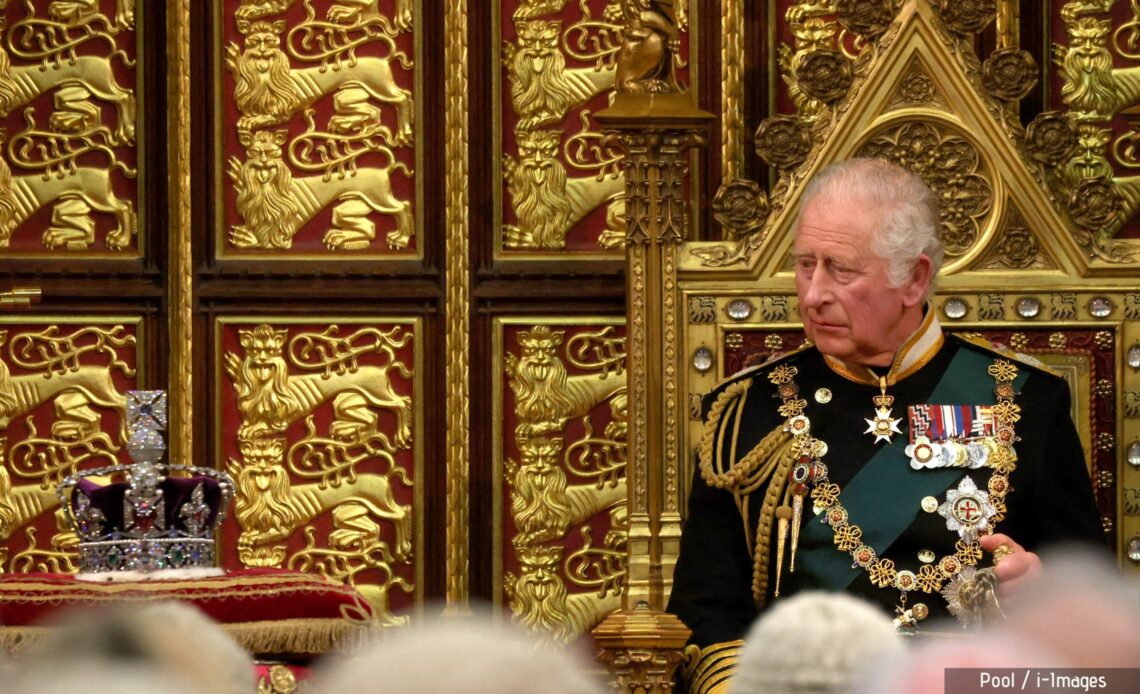
Many hundreds-year-old traditions will be continued when King Charles III and Queen Camilla are crowned. At the heart of the service will be the Coronation regalia and now details of the precious items to be used have been confirmed by Buckingham Palace.
Part of the Royal Collection, the Regalia is held in trust by the Monarch on behalf of the nation.
Some of the items we can expect to see are two Maces made of silver gilt over oak. Dating back to sometime between 1660 and 1695, these are the ceremonial emblems of authority and are carried out at events such as the State Opening of Parliament.
Also carried on formal occasions is the Sword of State. Symbolising Royal authority, the steel blade has a silver-gilt hilt in a wooden scabbard covered in velvet. Between 1660 and 1678 during the reign of King Charles II, two swords were made although the older one did not survive. As for the other sword, it has been used at several Coronations. This particular sword has an extra connection to King Charles III, as it was used in his Investiture as Prince of Wales in 1969.
Three other swords will be used during the Coronation Procession at Westminster Abbey. The Sword of Temporal Justice which represents the monarch’s role as Head of the Armed Forces and the Sword of Spiritual Justice which represents the Monarch’s role as Defender of the Faith. The final sword, the Sword of Mercy (or Curtana) represents the sovereign’s mercy. These swords will be carried without their scabbards and will be carried point up.
The Chrism oil of which Their Majesties will be anointed has been consecrated in the Church of the Holy Sepulchre in Jerusalem. The oil will be held in the Ampulla made from gold and cast in the form of an eagle with widespread wings. The silver-gilt Coronation Spoon will be used to anoint Their Majesties. It is the oldest object of the Coronation Regalia and is the only piece of Royal goldsmiths’ work to survive the twelfth century.
Other pieces making an appearance during the ceremony include spurs made in 1661 for King Charles II, the Sword of Offering, and two Armills that represent ancient symbols of knighthood and military leadership.
The Sovereign’s ring, a symbol of kingly dignity, has been used at the Coronations of all sovereigns since King Edward VII. Two Sovereign’s Sceptres will be used to represent temporal power, good governance, and the sovereign’s spiritual role. The Sovereign’s Orb will represent the sovereign’s power and symbolise the Christian world.
As previously announced, St Edward’s Crown will be used to crown His Majesty. The crown was made for King Charles II in 1661 as a replacement for the medieval crown that was melted down in 1649. This is the same crown worn by his mother, Queen Elizabeth II, during her Coronation in 1953. The crown has been removed from the Crown Jewels collection at the Tower of London for modification work ahead of the service.
The Imperial State Crown, also known as the Crown of State will be exchanged for St Edward’s Crown at the end of the service. The crown was made for the Coronation of King George VI in 1937 and is used for other ceremonial occasions such as the State Opening of Parliament. Its design is based off a design by a crown designed by Crown Jewellers, Rundell, Bridge and Rundell for Queen Victoria in 1838.
The Coronation takes places on May 6 2023 at Westminster Abbey.

